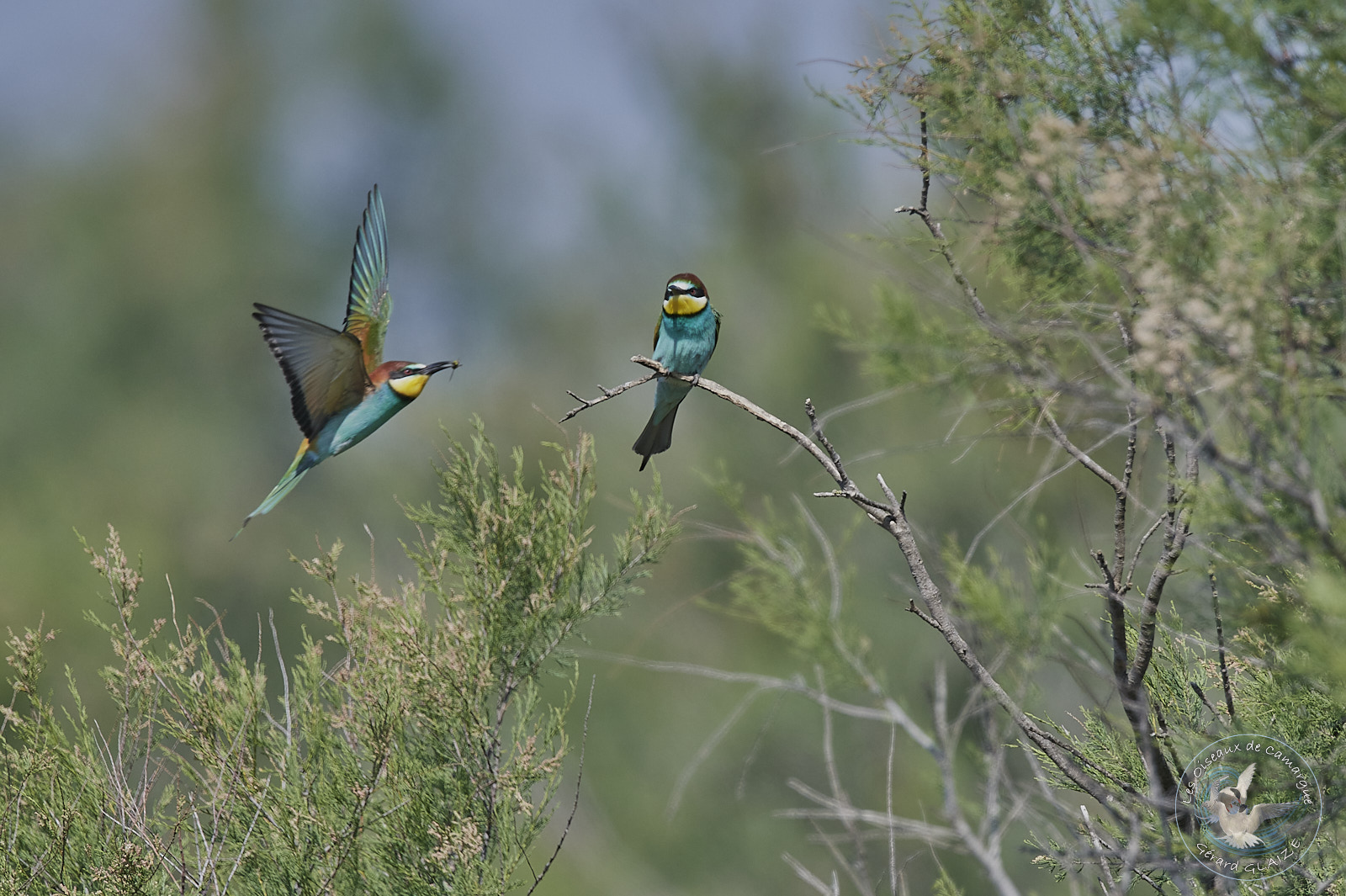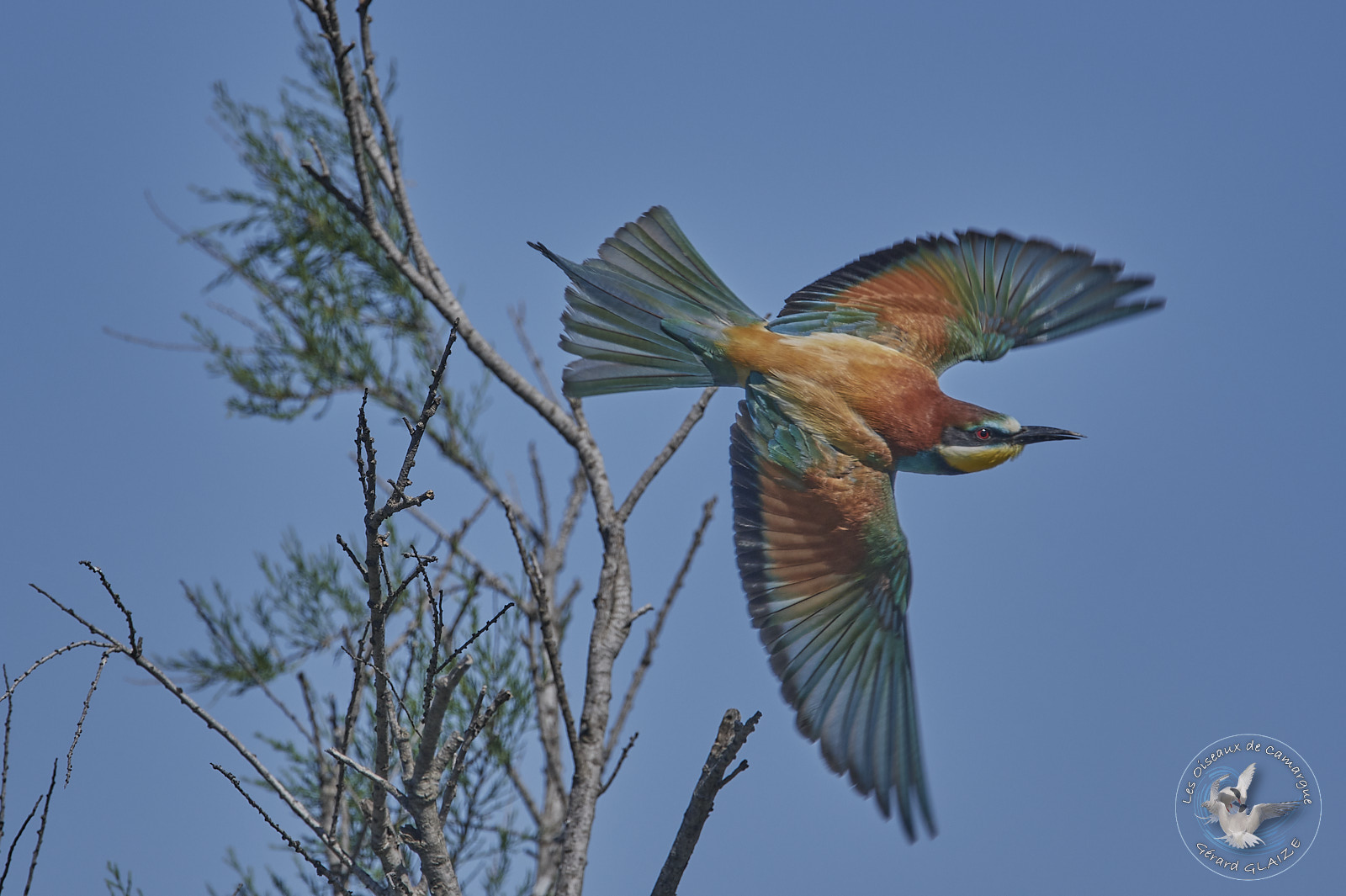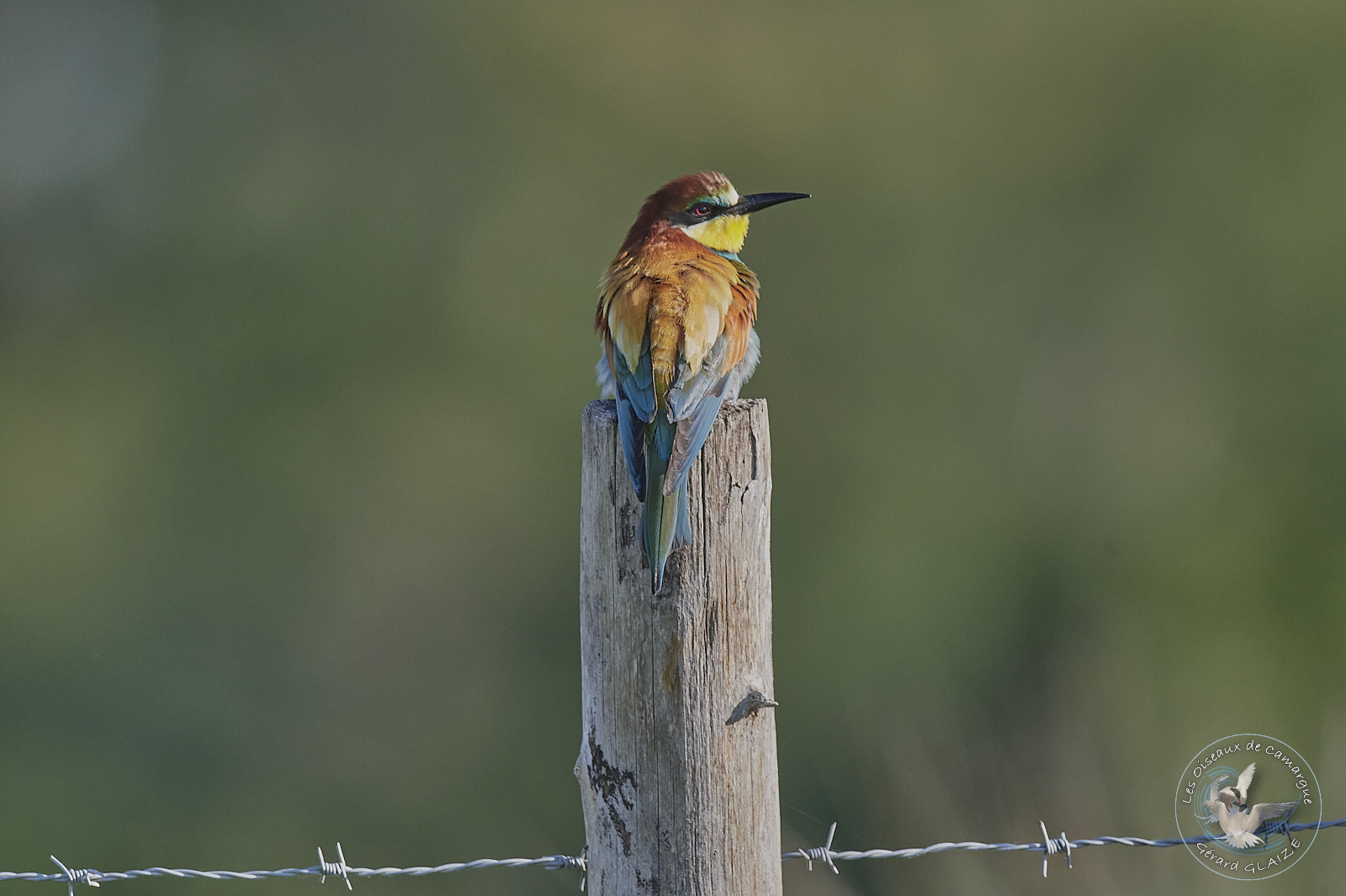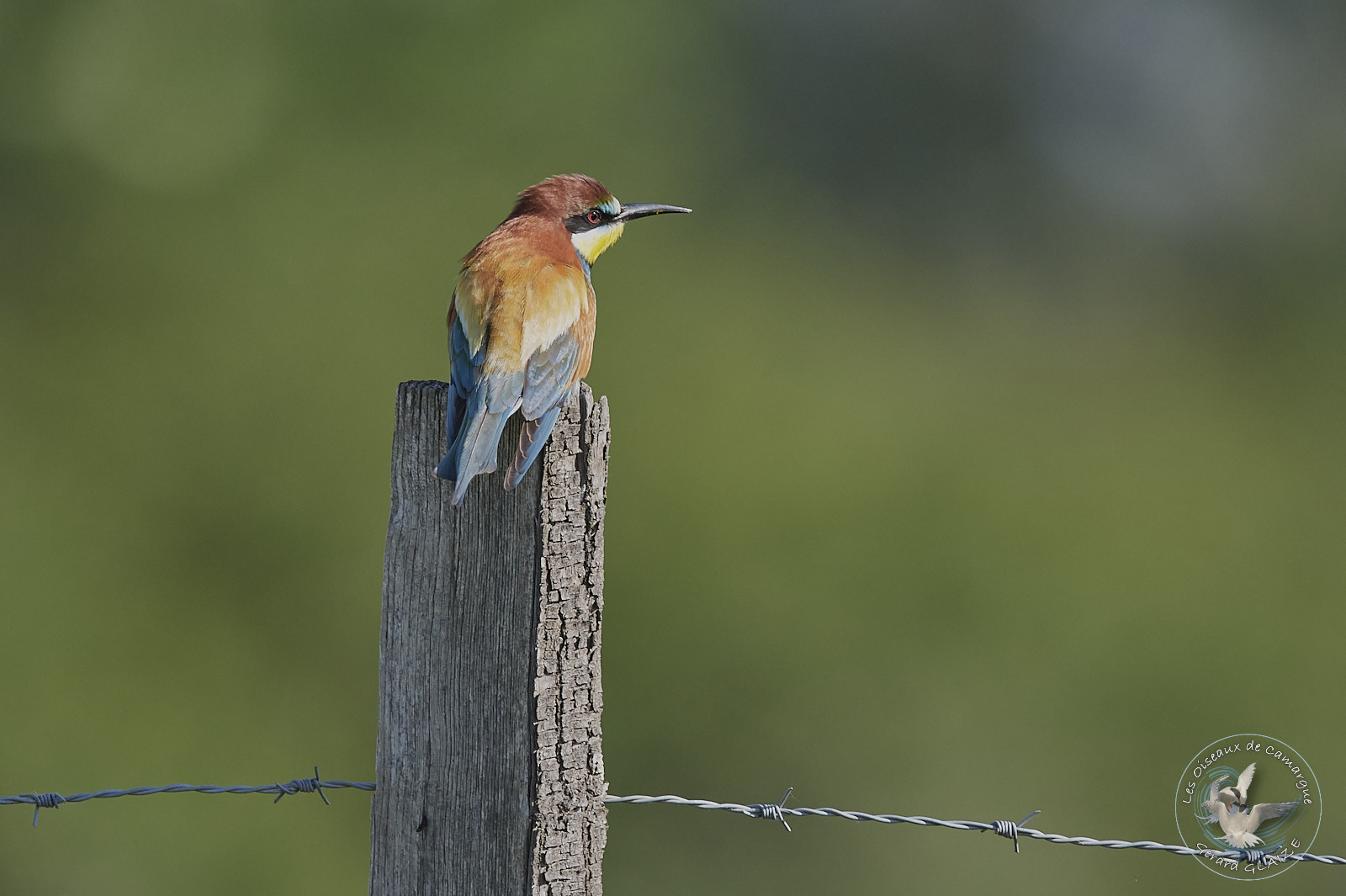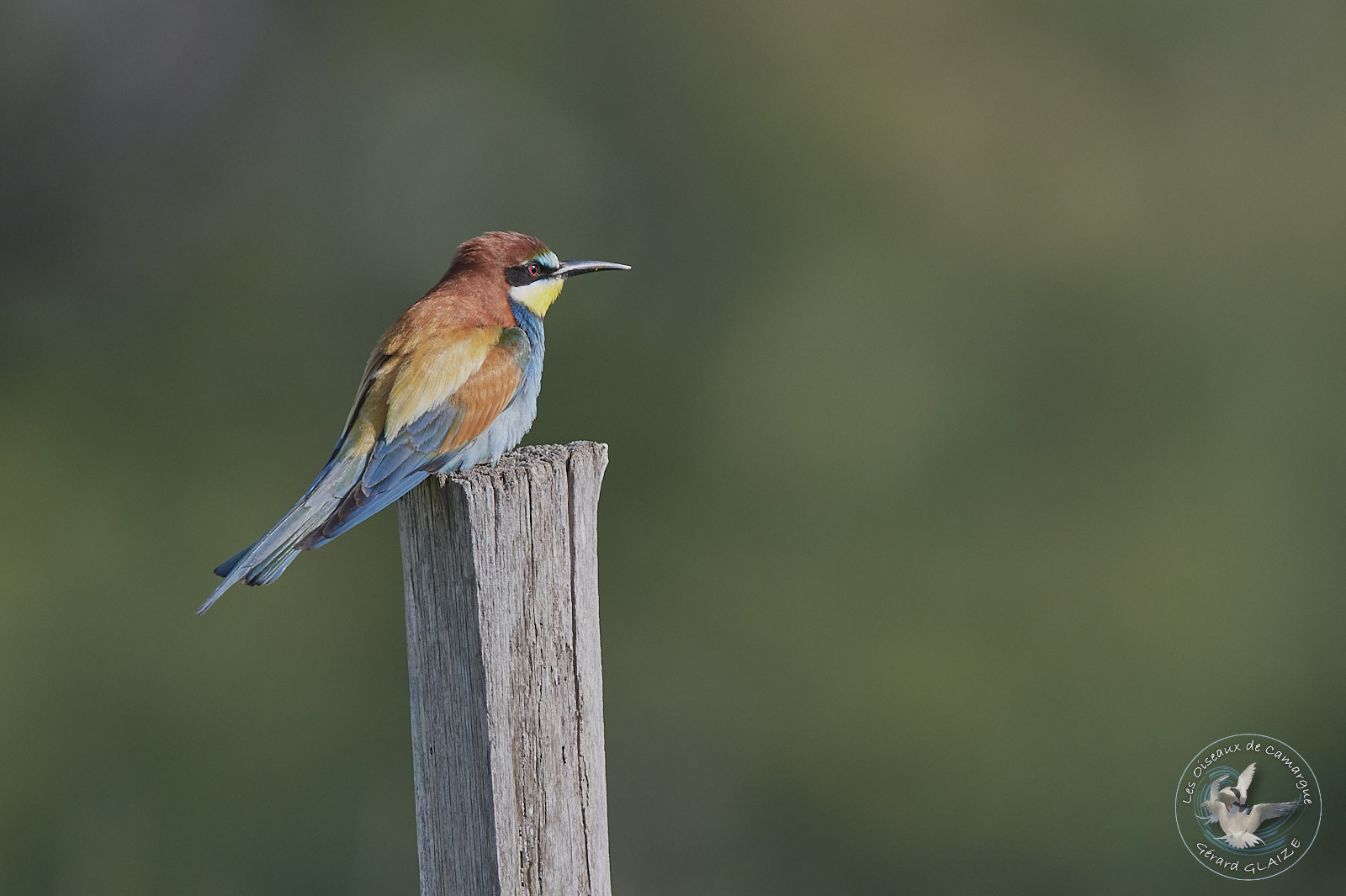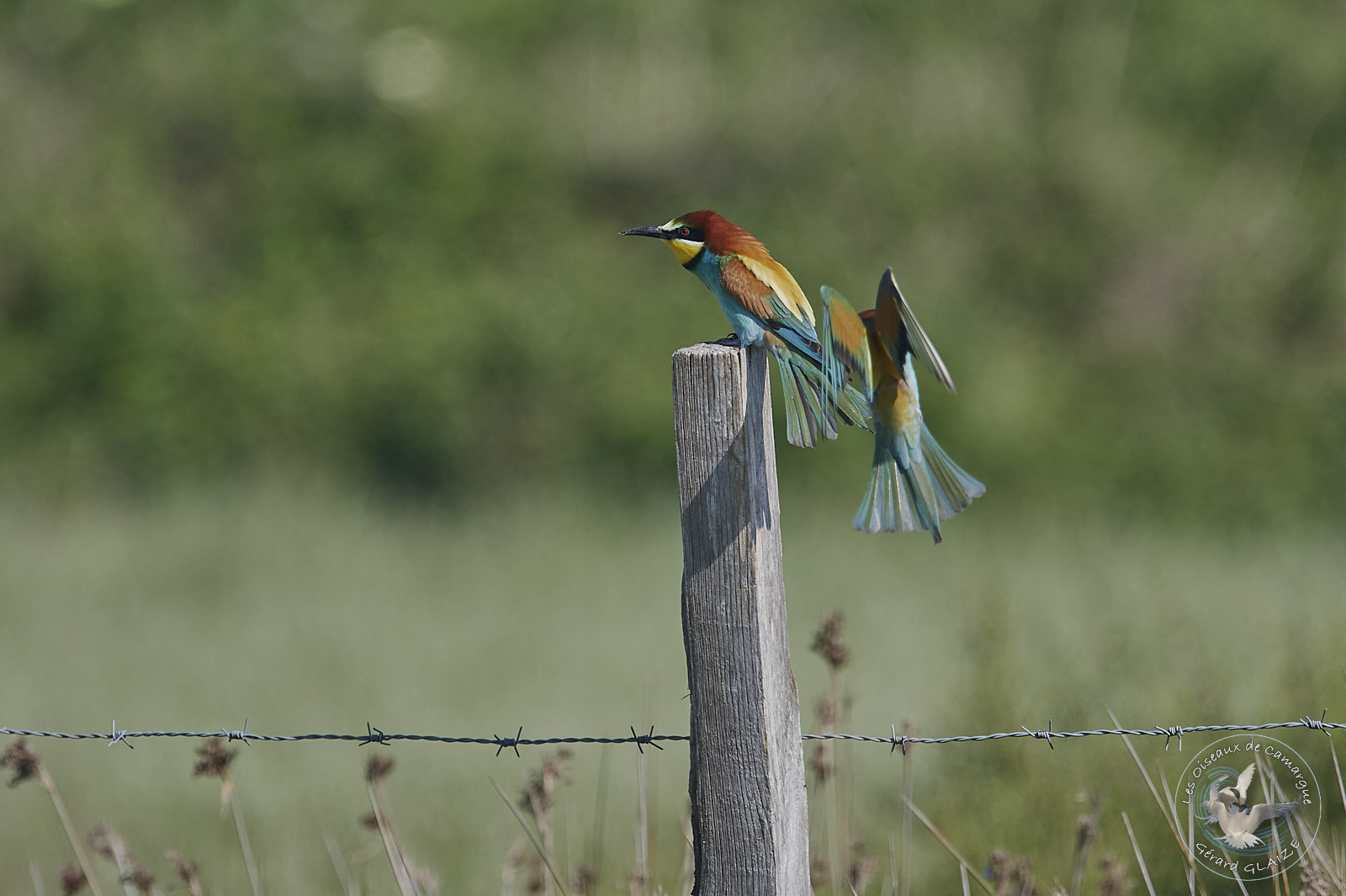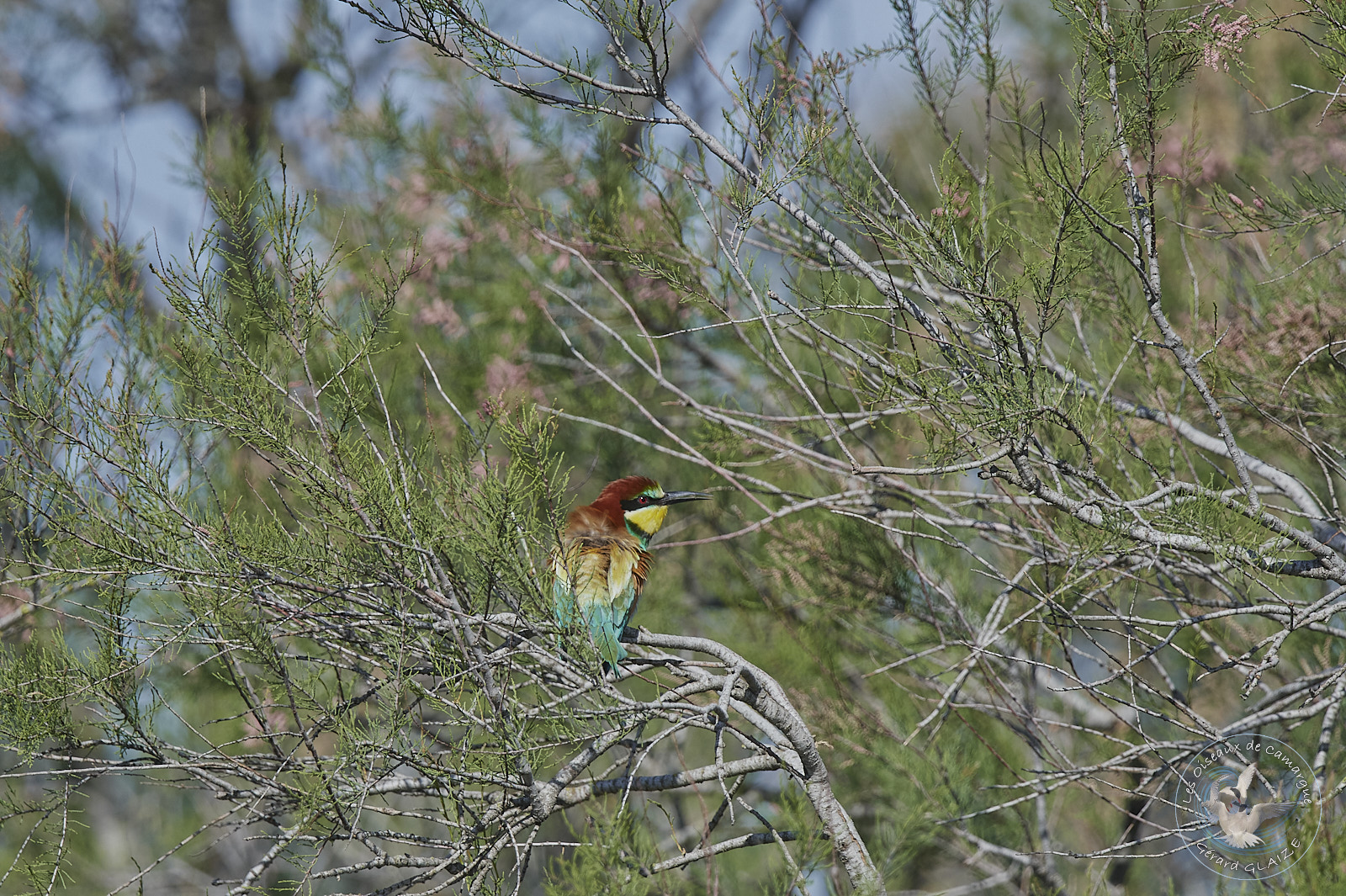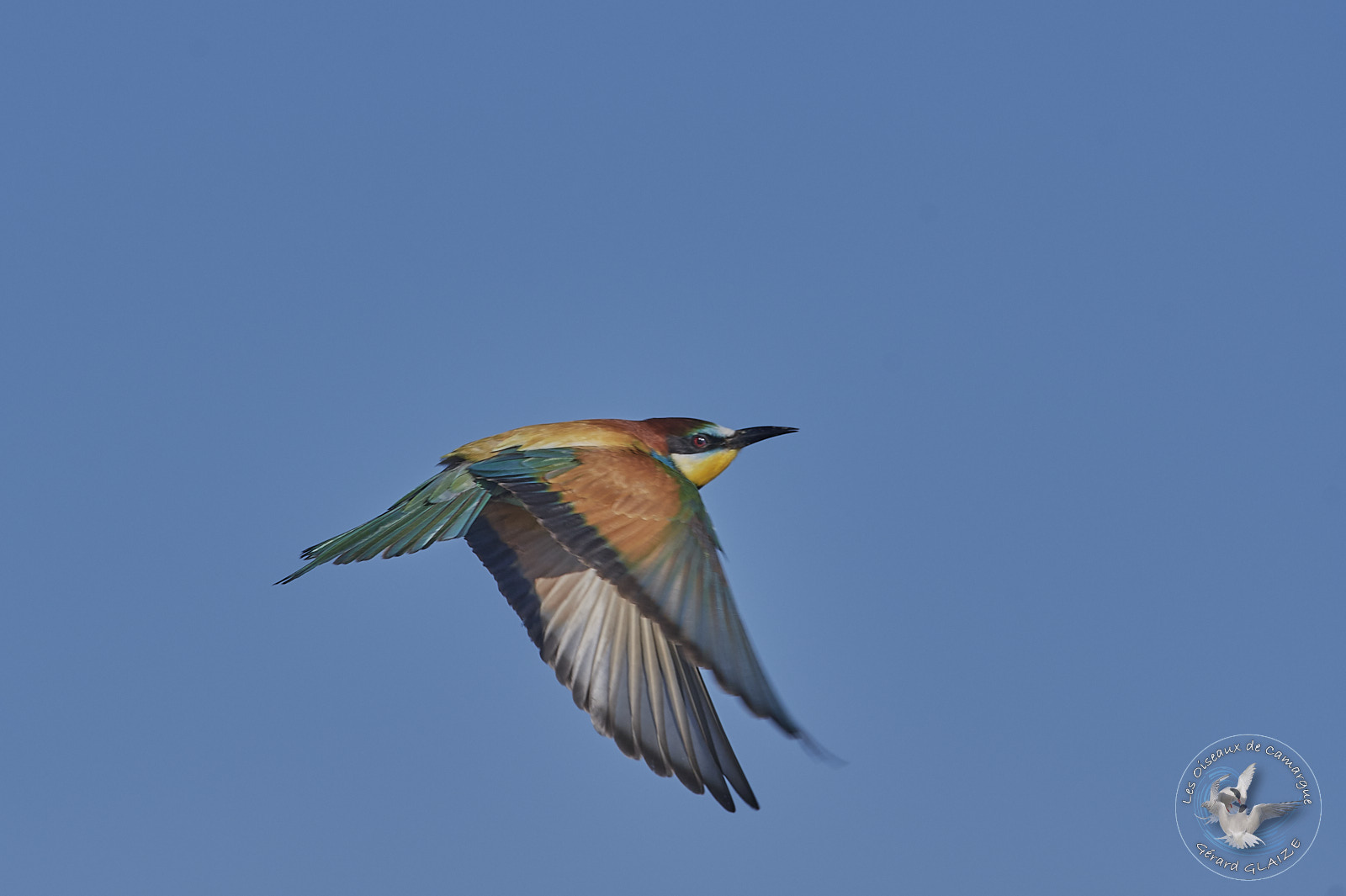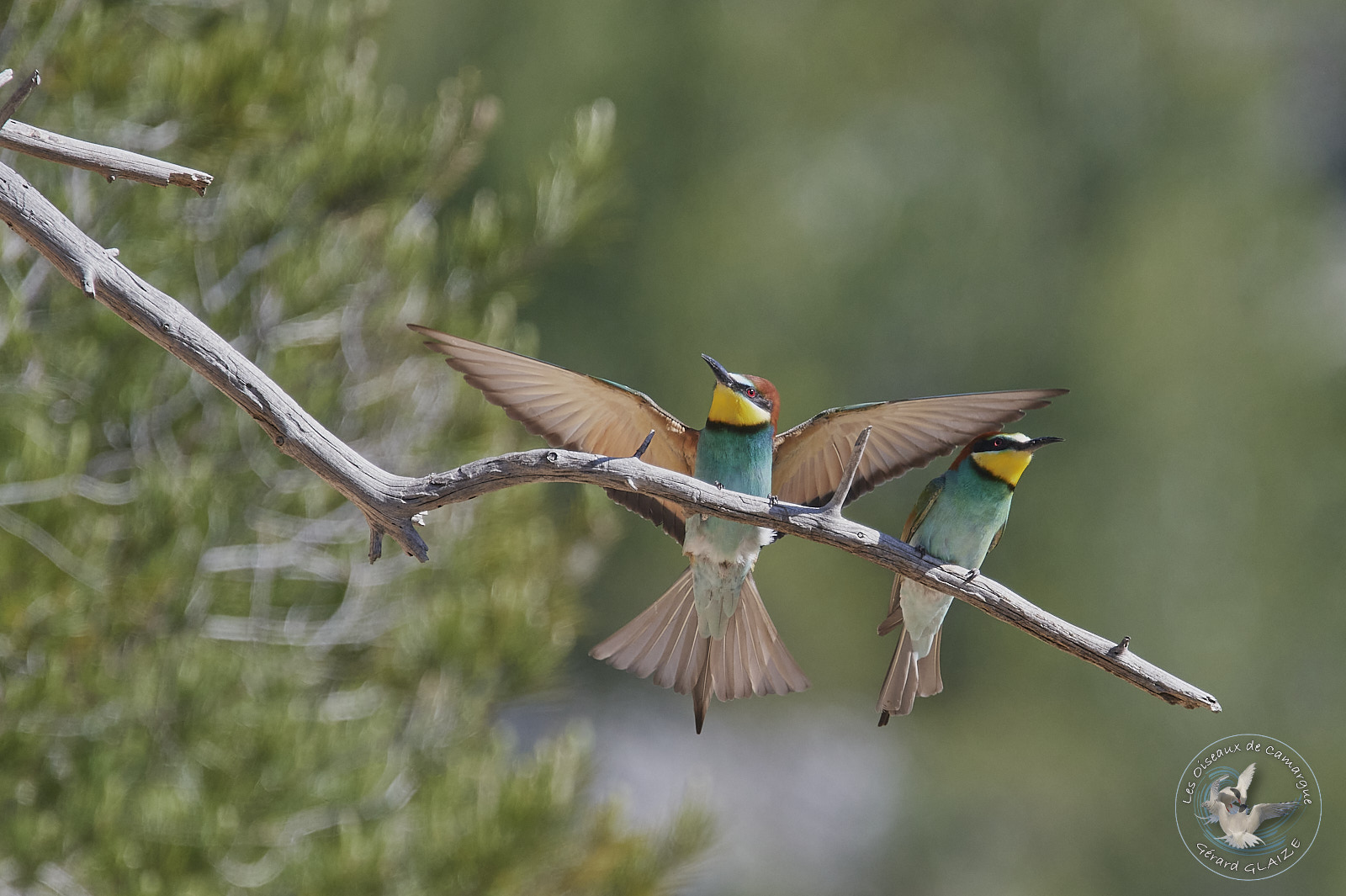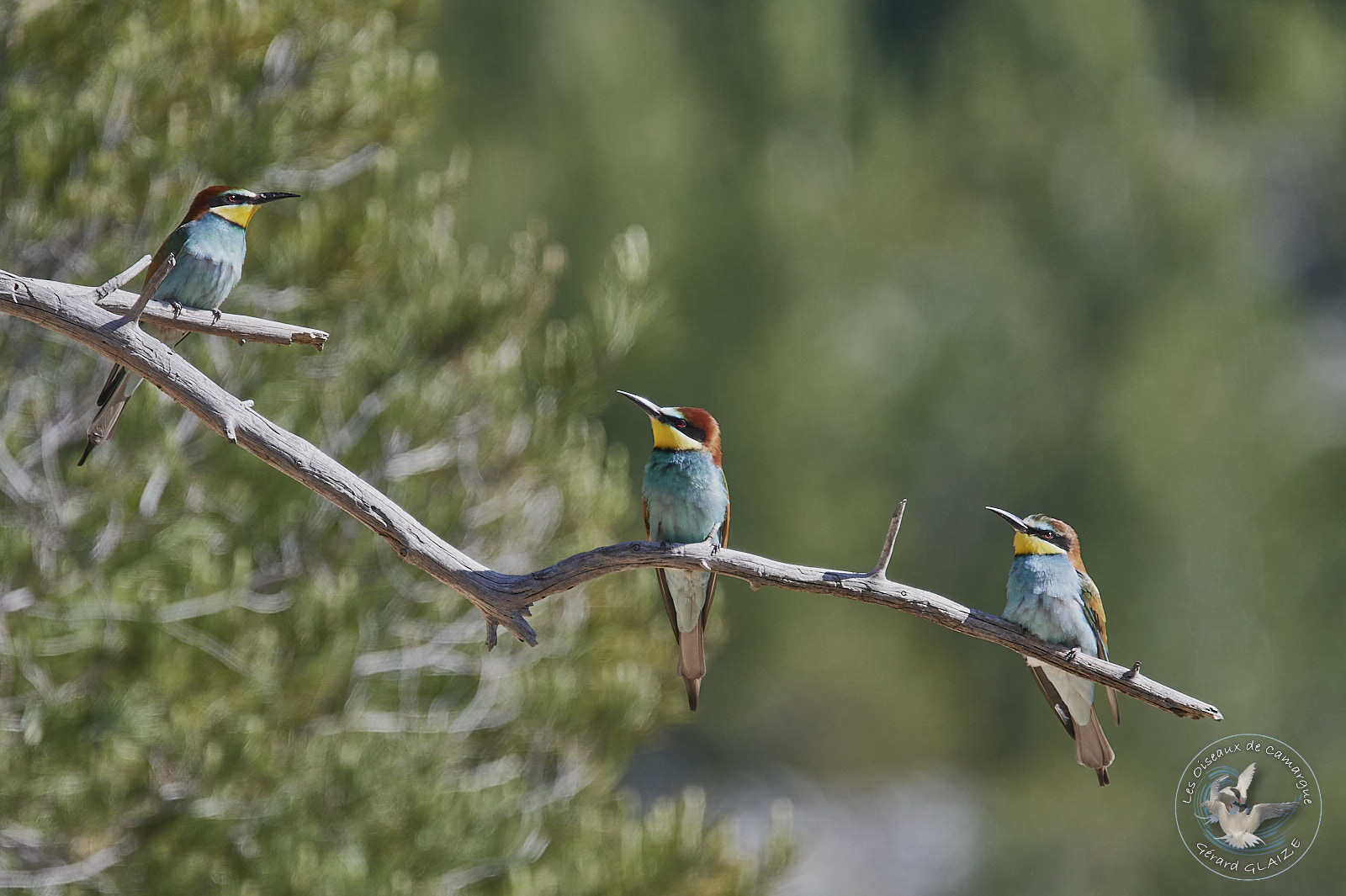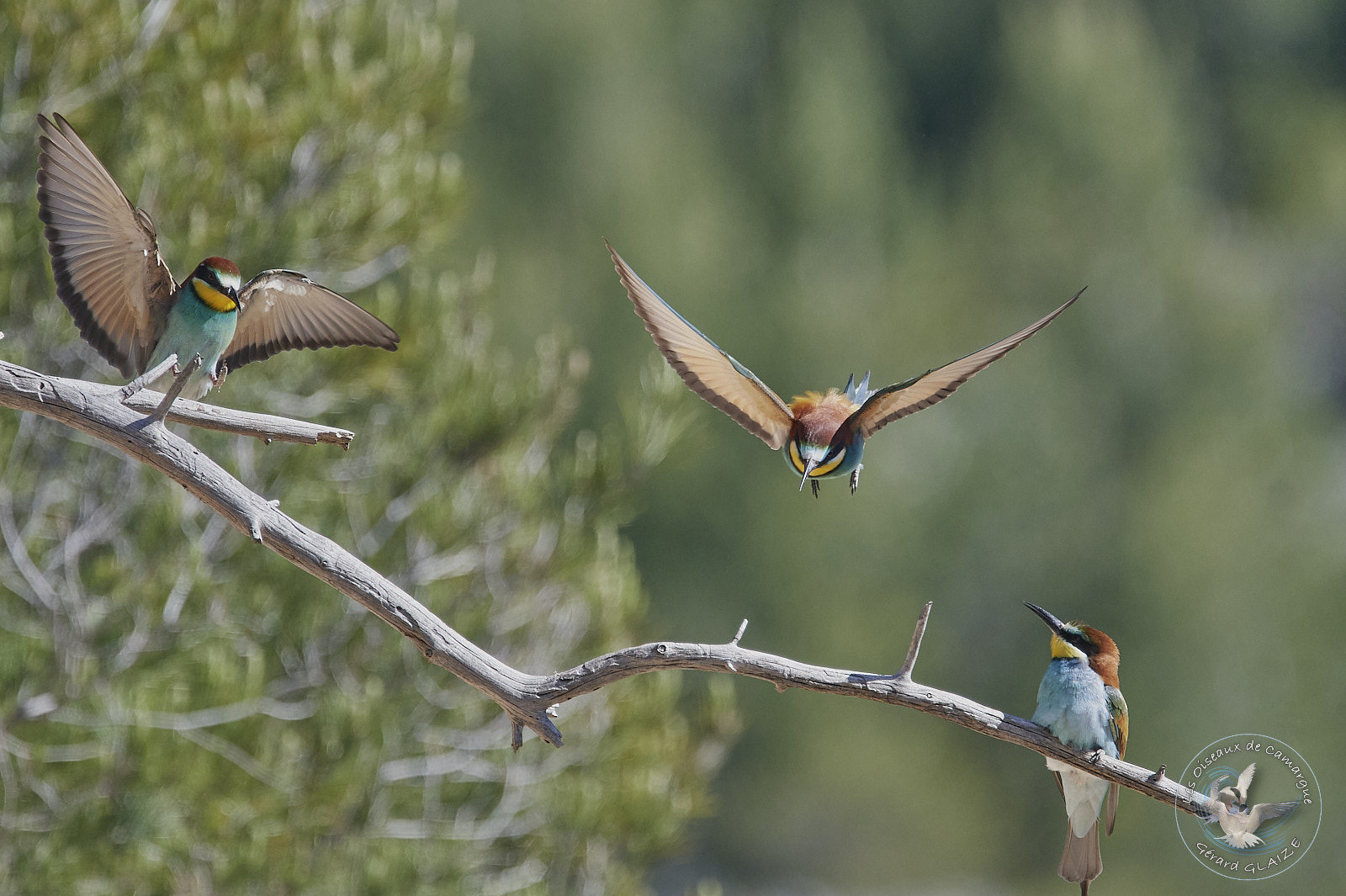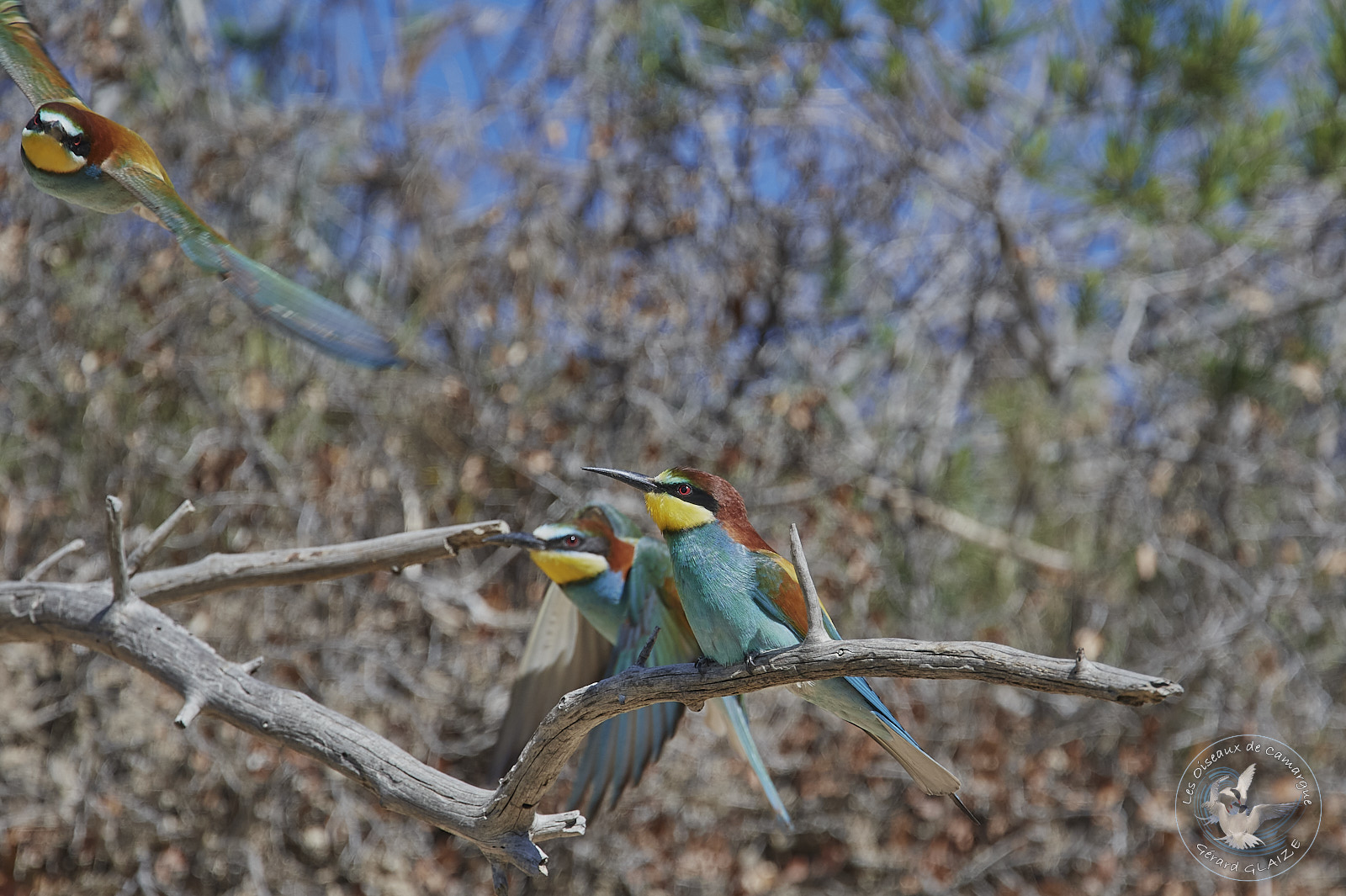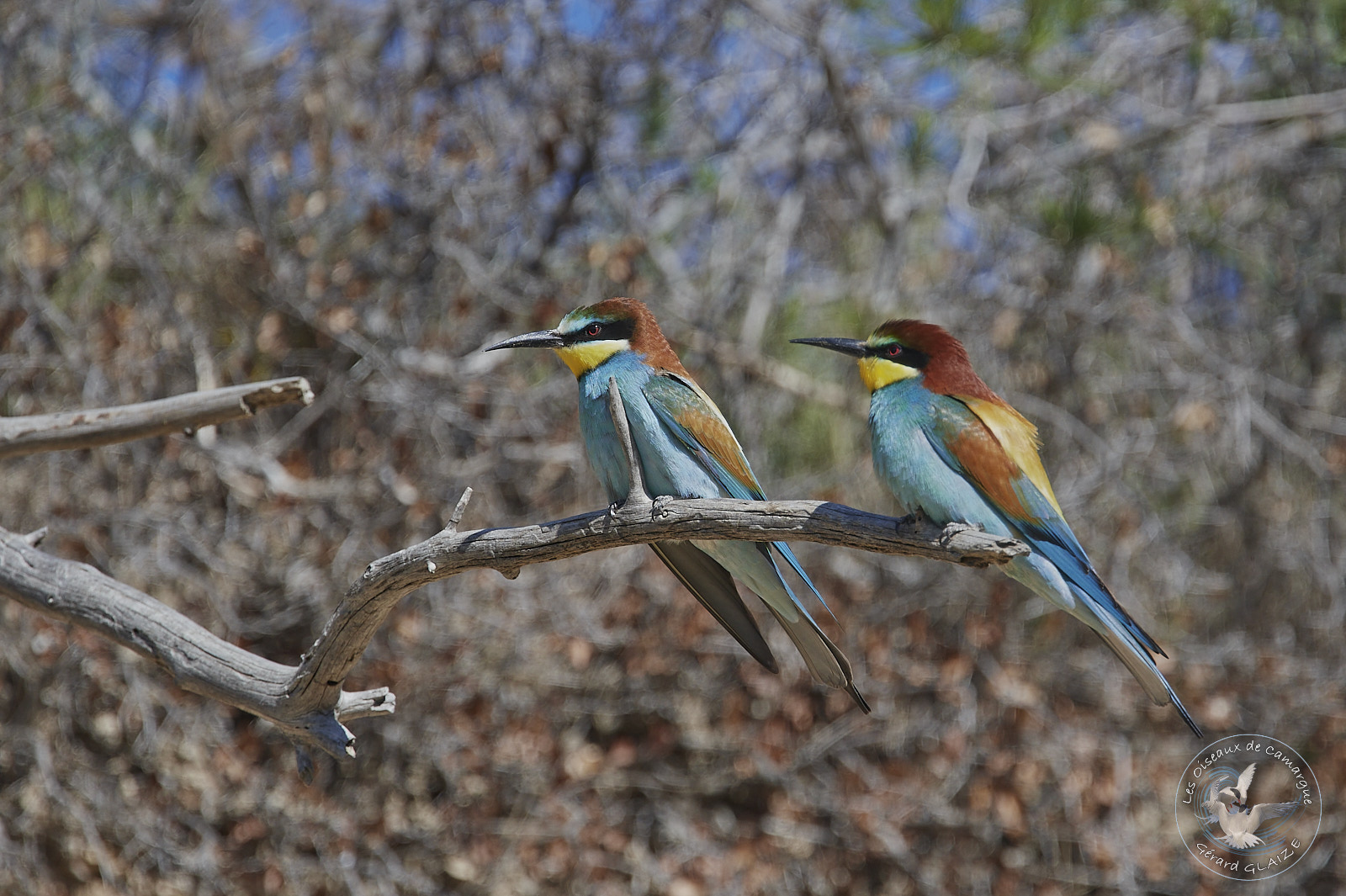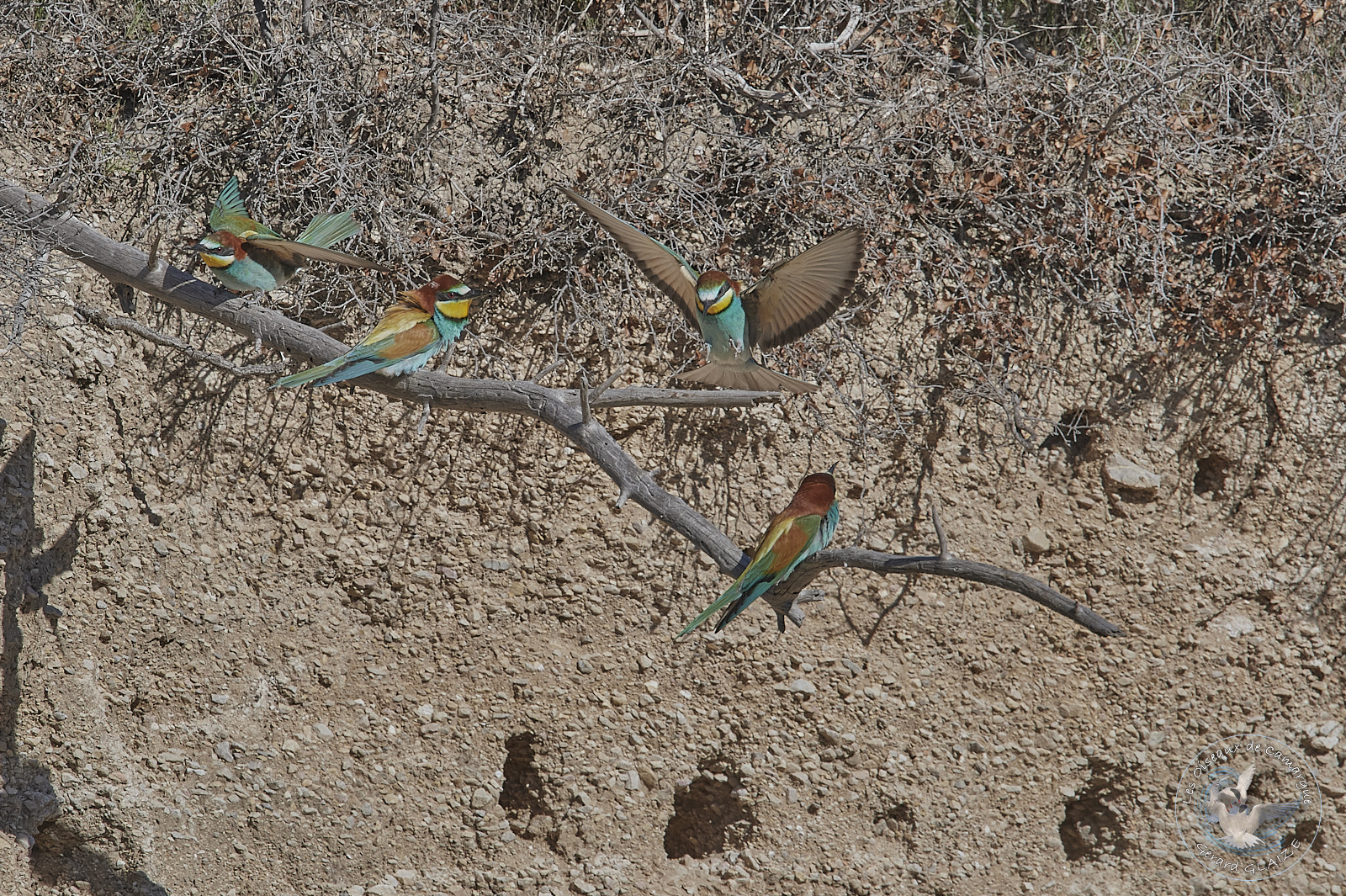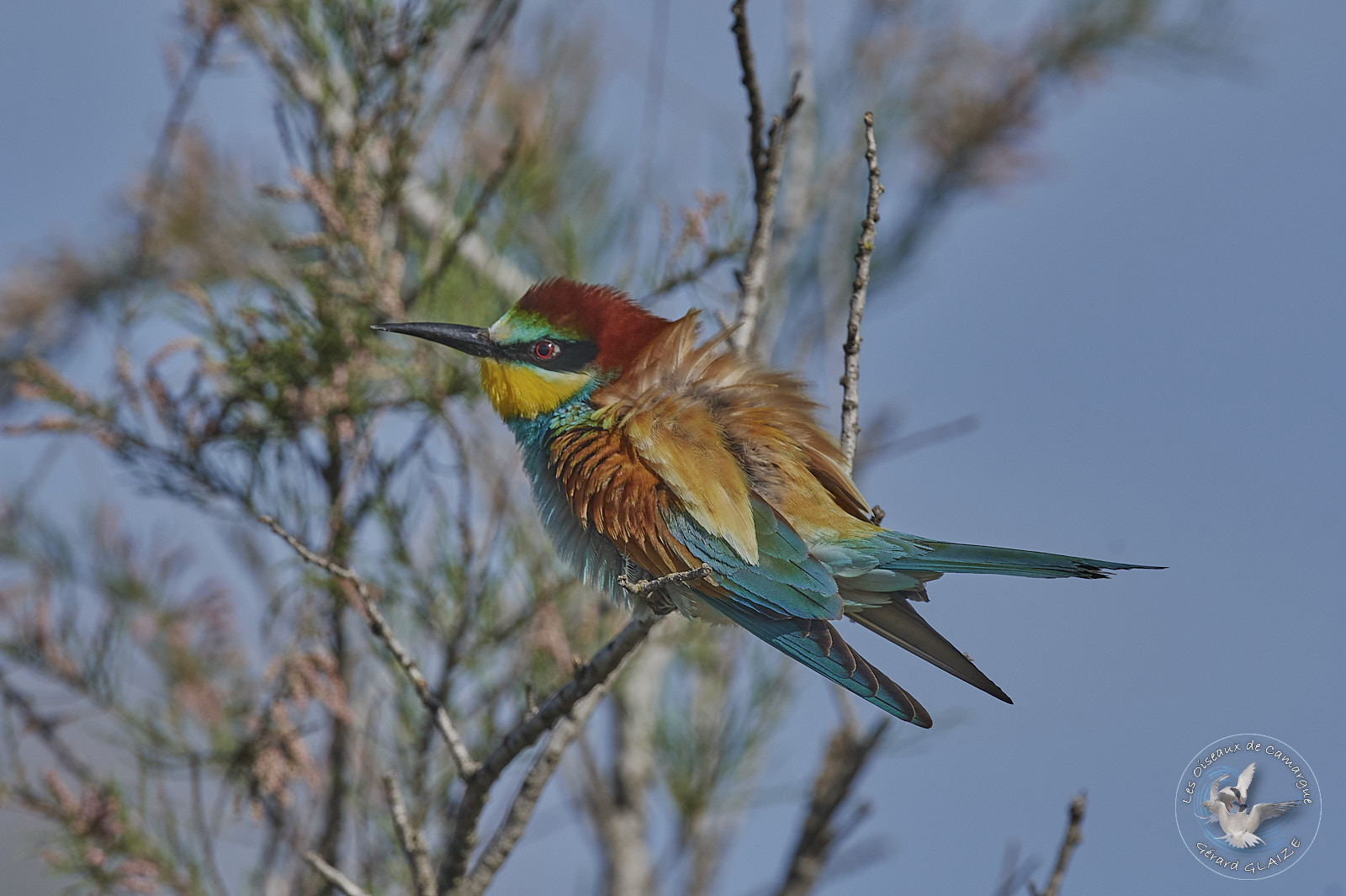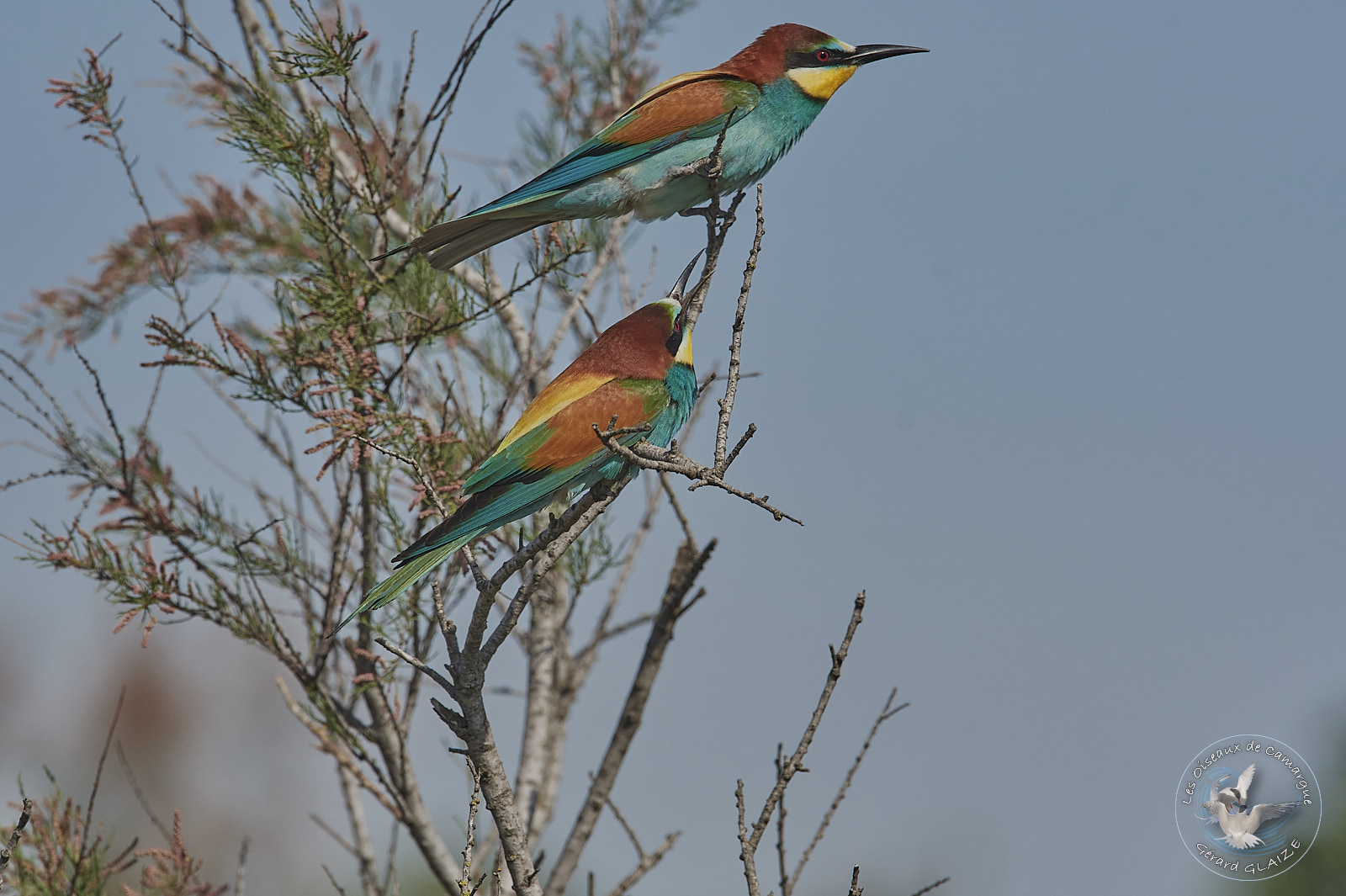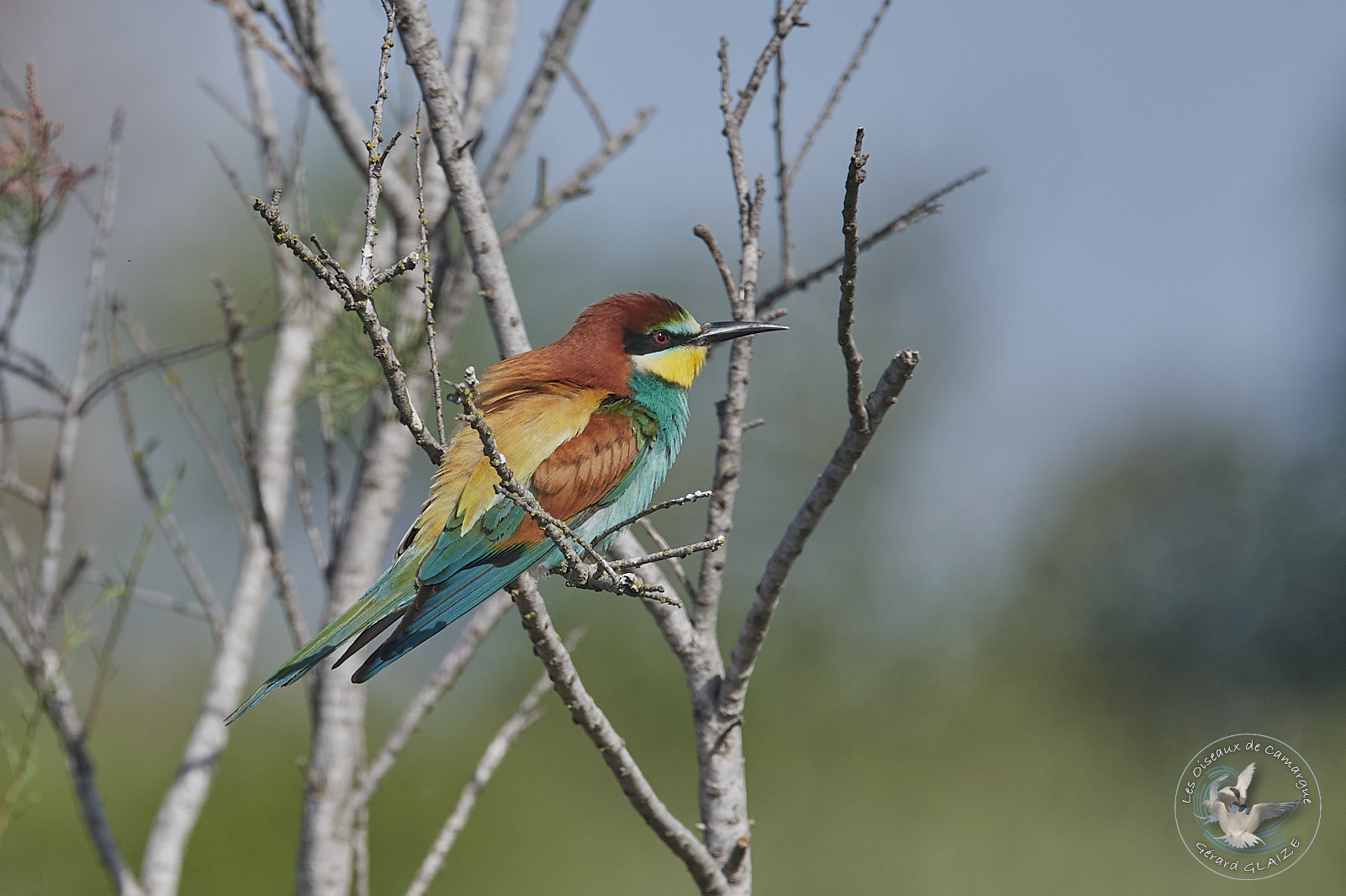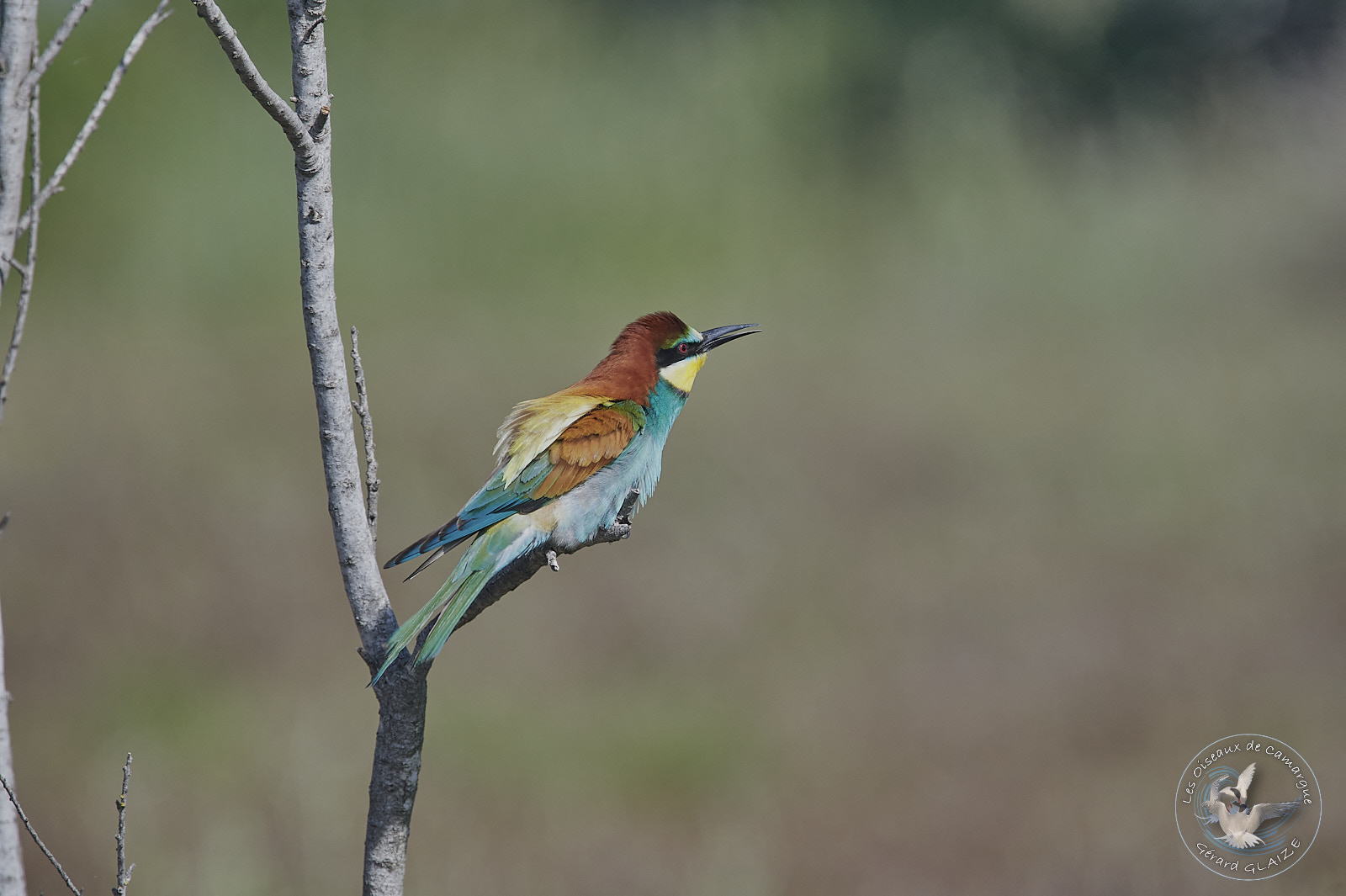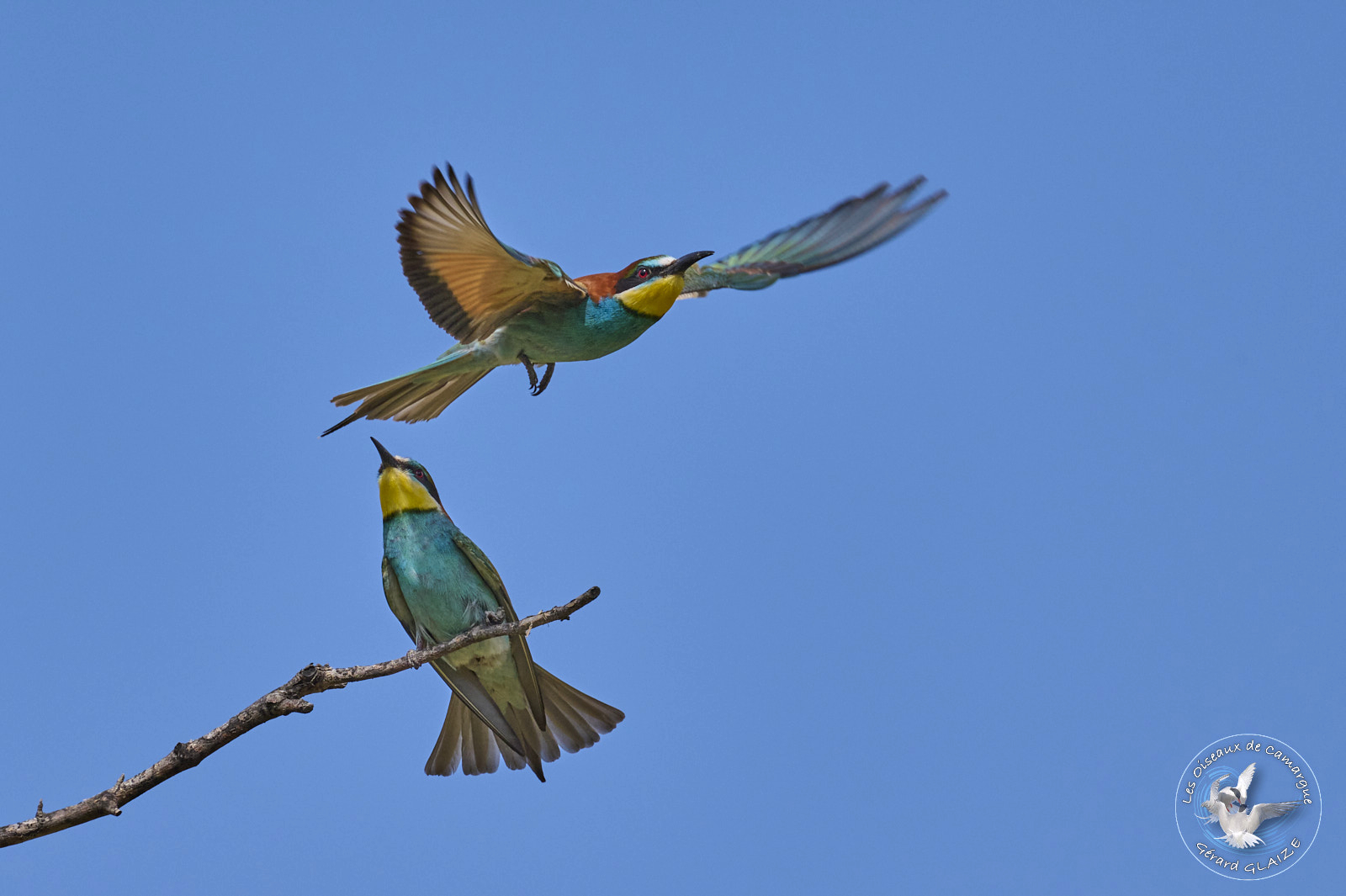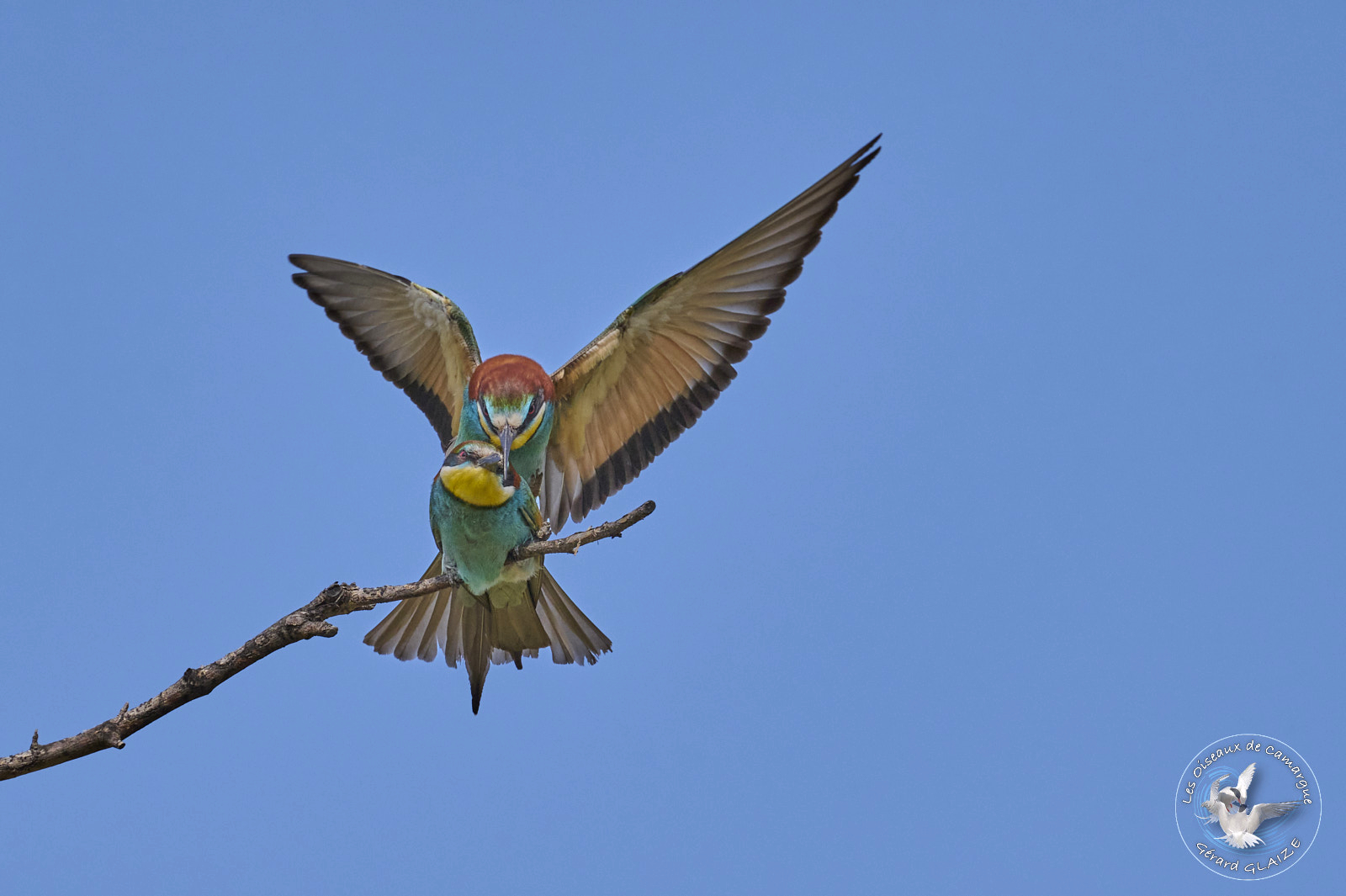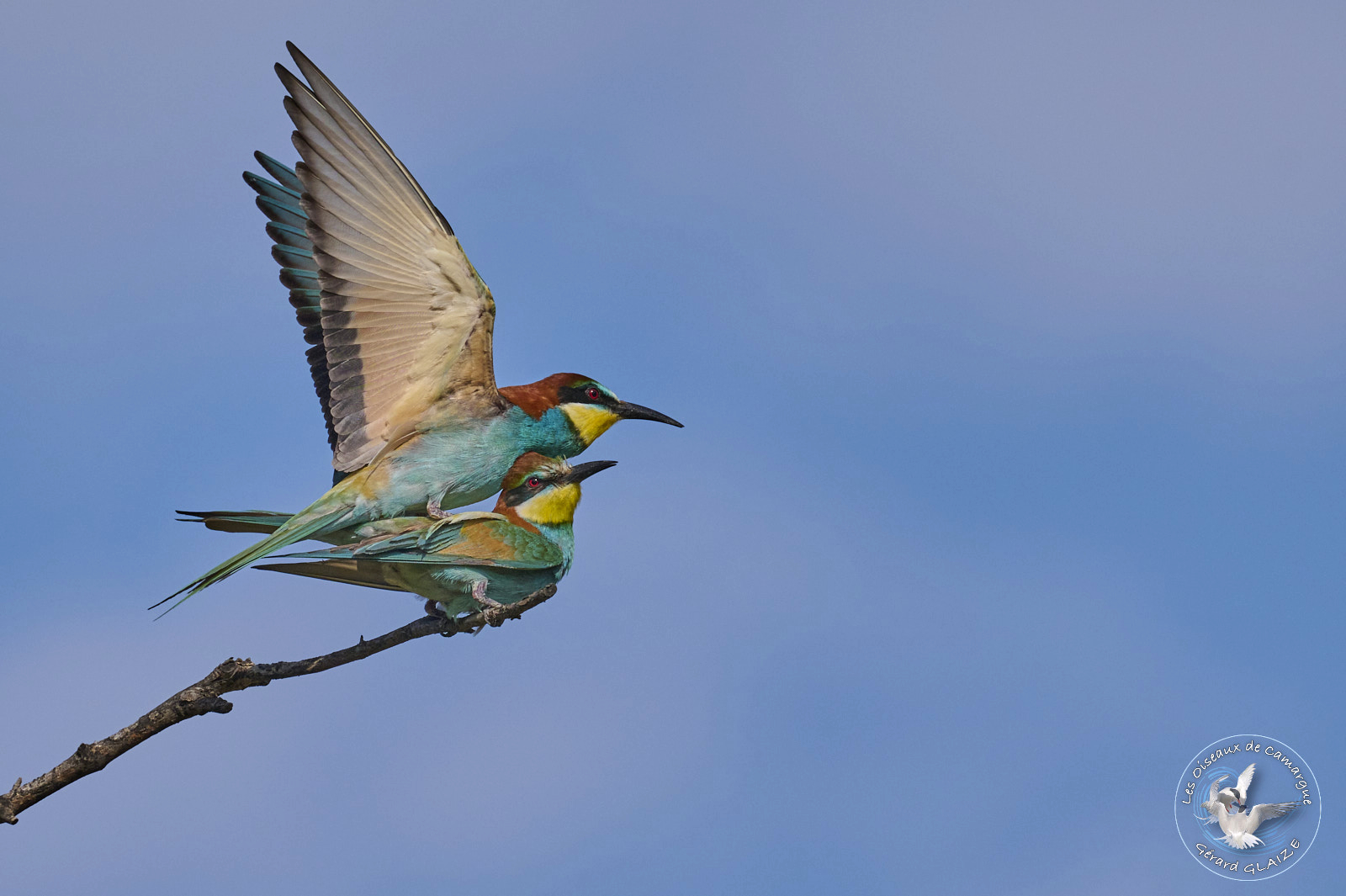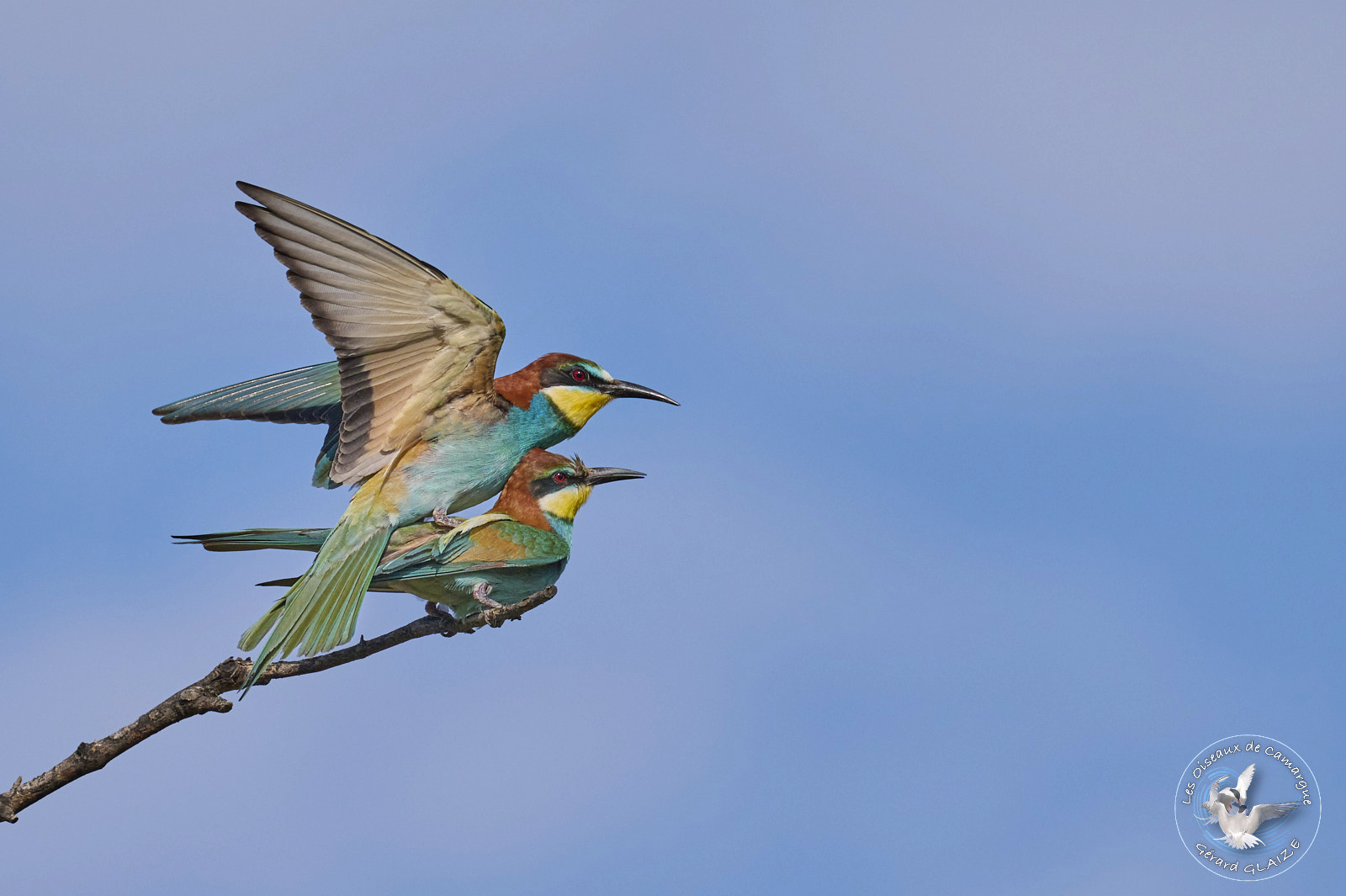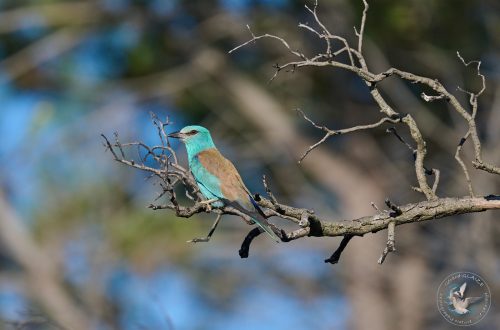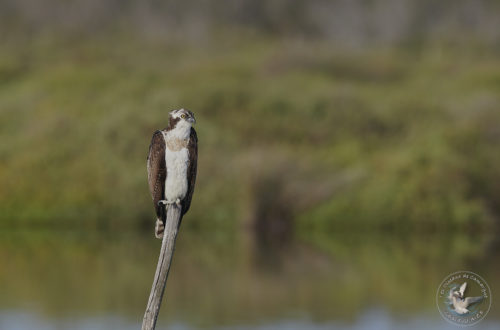European Bee-eater
The European bee-eater of Meropidae Family is a skilful hunter, catching insects in flight. This has also earned him his nickname “Hunter of Africa”. These are mainly wasps, bees, hornets, as well as dragonflies in the Camargue. It is the size of a thrush. Its colors with metallic reflections are composed of the turquoise blue-green of the belly, the chest and the bottom of the wings, brown-red on the back the crown and the top of the wings, dark green of the tail, black of the slightly curved beak and like extended by a line of equally black feathers, red iris in a black eye, yellow bordered with black for the bib.
The European bee-eater is a gregarious species both in hunting and during migration.
European Bee-eater
Scientific name : Merops apiaster
Family : Meropidae
Length: from 27cm to 29 cm – Wingspan: from 45 cm to 50 cm
Weight : from 44 gr to 78 gr
IUCN Conservation Status: LC
Flight
The European Bee-eater has an agile flight. In hunting, it flies like swallows. The wing beats are sometimes sharp, the flight sometimes gliding in direct flight. The trajectory is undulating, rapid wing beats before a long slide, the wings glued to the body.
Habitat
The European bee-eater is particularly fond of the sandy banks of waterways, scree cliffs, old sand pits, gravel pits, where it digs burrows. It often lives in colonies. It likes to perch with its congeners on protruding branches, electric wires and poles.
Regime – Diet
The European Bee-eater feeds on Hymenoptera (wasps, bees, hornets, bumblebees) which are the main prey. He is also fond of cicadas, dragonflies, butterflies, bugs; Orthoptera (locusts, grasshoppers); beetles (beetles…); diptera (flies…).
Nesting
Wintering begins to move north in March. Also in France, the first birds are usually reported in the first half of April. It generally nests in colonies in galleries up to 2 meters deep. It nests from May to August. The female lays 5 to 7 eggs, the two partners share the brooding. This lasts about three weeks. Chick rearing lasts three to four weeks in the nest.
Migration
The European bee-eater is a migratory species, so they can travel up to 500 km per day. European birds migrate and winter in tropical Africa. The end of summer and the disappearance of many insects therefore closes the period of prosperity for the bee-eaters who begin a long and perilous journey. Coming from Western Europe, large flocks of bee-eaters cross the Strait of Gibraltar. They fly over the Sahara to take up their winter quarters in West Africa. Central and Eastern European bee-eaters cross the Mediterranean and the Arabian desert to winter in South Africa.
Protection
The species is listed as “Least Concern” by the International Union for Conservation of Nature (IUCN) and is not considered threatened. However, the use of pesticides leads to the gradual reduction of its food resources, which are hymenoptera.
The European bee-eater enjoys total protection on French territory since the ministerial decree of April 17, 1981 relating to birds protected throughout the territory.
Song
The European bee-eater has very characteristic rolled and hoarse whistles. These whistles allow it to be recognized even when it is barely visible in the sky.
Useful Links
Other Links
- You can see the article from my site “Birds of Camargue” for more information on the Camargue and the Birds.



